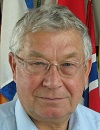 |
||
|
Turbine generator for Unit 1 delivered to Akkuyu NPP site Press Service of AKKUYU NUCLEAR JSC, PUBLISHED 16.03.2022 The main components of Unit 1 turbine plant including stator, turbine generator rotor and low pressure (LP) cylinder, were delivered to the Eastern cargo terminal at the Akkuyu NPP construction site. The total mass of the cargo batch exceeded one thousand tons. The heaviest piece of equipment delivered was the turbine generator stator, which weights over 430 tons and is 12 meters long. Cargo of that size falls under uniquely heavy category and requires special preparation for its unloading and subsequent transportation. Weight of other delivered items is 260 tons for turbine generator rotor, 240 tons for lower casing and 147 tons for upper casing of the LP cylinder. Zoomlion ZCC 12500 caterpillar crane with a lift loading capacity of 1250 tons was used To unload the vessel carrying heavy equipment. With the use of the crane, the turbine plant components were transferred to self-propelled modular transporters (SPMTs) and transported to temporary storage areas at the Akkuyu NPP construction site. Unloading operation of all the equipment components lasted 7 days. "Turbine generator stator is the heaviest NPP equipment, so its transportation is subject to particularly strict requirements. In the near future we expect the arrival of another low pressure cylinder body and a noise-protective turbine enclosure. This year we are planning to start installation of the main process equipment of Unit 1 turbine building," said Sergey Butckikh, First Deputy Chief Executive Officer - Director of Akkuyu NPP under construction. The turbine generator consists of two main parts - a rotor and a stator. The stator is a spacious cylindrical structure of steel 12 meters long. Inside the stator, which is the stationary part of the generator, the rotor, a powerful accumulator of mechanical energy, rotates. This particular equipment is involved in the conversion of mechanical energy into electrical energy. The structure of Akkuyu NPP steam turbine consists of three modules: one combined high and intermediate pressure cylinder (HP and IP cylinder) and two low pressure (LP) cylinders. Each module is equipped with a cylinder with blades, into which steam is supplied. While passing through the HP and IP cylinder the steam spins the turbine, which produces electricity. Representatives of Nuclear regulatory authority of Turkey (NDK), the equipment supplier AAEM LLC, and AKKUYU NUCLEAR JSC participate in the acceptance of the completed equipment at the manufacturing plant. Based on the results of the acceptance inspection, which is conducted in accordance with the most stringent quality standards, the turbine set components are delivered by sea to the Akkuyu NPP construction site. Before the equipment is handed over for installation, a special committee performs an incoming inspection to confirm its safety upon transportation. Then the committee checks the completeness and quality of the design and supporting documentation, and apply visual, dimensional and other types of control. Topics: Asia, Turkey, NPP Akkuyu Other news: Ghana will decide on the site before the end of the year Four candidate sites are currently being explored. ROSATOM presents full Small Modular Reactors product line at EXPO 2020 Small Modular Reactors Day was an international platform for discussing the benefits of SMR. 19 CNNC nuclear power units anticipated to achieve full marks on WANO composite index Average index reaching a record high of 99.51. Last news:
|
Hero of the day 
Fourth Hualong One unit connected to grid Unit 3 of the Karachi nuclear power plant in Pakistan was successfully connected to the gird on March 4, laying a solid foundation for its commercial operation. INTERVIEW
Vladimir Kriventsev OPINION
Victor Murogov |
Licence Р В Р’ВВВВВВВВВР В Р’В» №ФС77-30792. ATOMINFO™ trademark.

